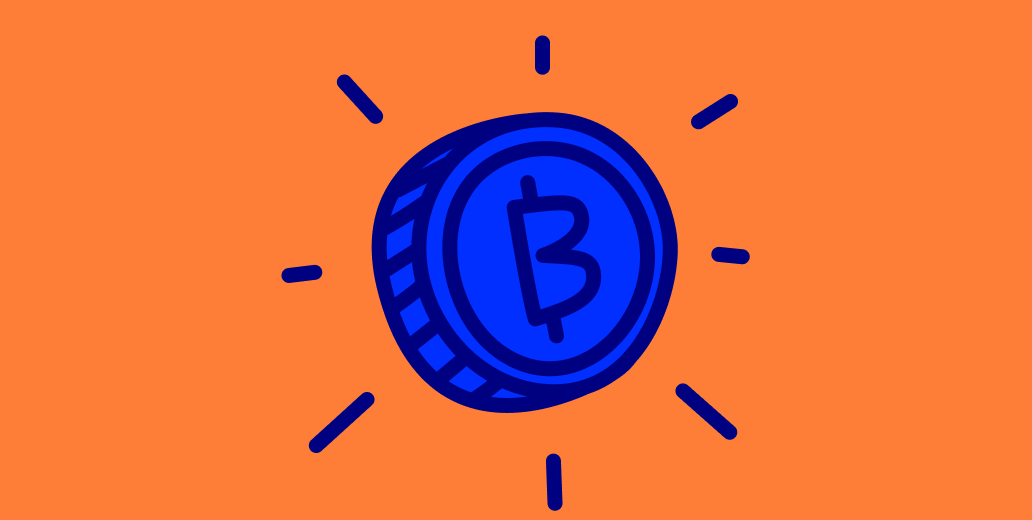 Back to Articles
Back to Articles
Why is bitcoin so volatile?
Bitcoin has always been known for its high volatility, sometimes rising or dropping thousands of dollars within a couple of hours. But why does this happen? Find out what drives bitcoin’s dramatic price changes and whether it’s safe to buy the dip.
Bitcoin can make you rich overnight, but in a couple of days, you can lose a significant part of your investment. That’s because the first cryptocurrency is very volatile – it rises sharply and then falls just as quickly. Over and over again! In this article, you will discover what are the reasons for such sharp fluctuations and whether volatility is always a bad thing.
What is volatility?
Volatility is the rate at which the price of an asset increases or decreases. If an asset is highly volatile, its price can change significantly within a very short period of time.
When launched back in 2009, bitcoin cost just a fraction of a cent. Around a year later, it began gaining some popularity, reaching nine cents. Since then, the king cryptocurrency has grown thousands of times, but its price has always fluctuated greatly. Sometimes, it can rise or drop thousands of dollars within a couple of hours, which makes it extremely volatile.
What makes bitcoin so volatile?

There are several reasons why bitcoin and the crypto business, in general, is such a roller coaster ride.
Bitcoin is relatively new and immature
One of the main reasons behind bitcoin’s volatility is its relatively young age. BTC has been around for just over a decade, while, for instance, stocks have been traded for more than two hundred years. They have stood the test of time and are now more stable, with fewer fluctuations. As for crypto, the world is still trying to figure out its role in the global economy.
Investors regularly change their sentiments towards the first cryptocurrency, which impacts its price. They react to almost every single news event. This includes everything from macroeconomic events, such as the Fed’s rate announcements, to statements made by influencers, like Elon Musk. Sometimes one single news event can turn the sentiment from negative to positive and vice versa.

But how does sentiment influence the price of a coin? The answer is very simple: when investors and traders feel good about bitcoin and believe it will increase in value, they want to buy more of it. As a result, the demand for BTC grows and drives up the price. On the other hand, when people feel negatively about bitcoin and believe it will decrease in value, they start selling it. This reduces demand for bitcoin, which causes the price to fall.
The crypto market is small in terms of capitalisation
The crypto market is relatively small compared to other markets. Its capitalisation slightly exceeds one trillion dollars as of April 2023, while that of the New York Stock Exchange exceeds thirty-five trillion dollars.
Smaller markets are usually more volatile and riskier than larger ones because they are primarily dominated by a few big players. This means that one or two bitcoin whales can dramatically influence bitcoin’s price by selling or buying more coins. A bitcoin whale is simply an entity or a wealthy individual holding a large amount of BTC.
Crypto is heavily hyped on social media
Media hype is another factor that affects volatility. Cryptocurrency, and bitcoin in particular, have always been trending topics in social and mass media. Business people, financial experts, and even celebrities are all sharing their opinion about crypto or even promoting it.
If, for instance, you read that some celebrities you like, hit big with BTC, you along with many fans are very likely to buy some too. On the other hand, if someone trusted, like a popular crypto expert on YouTube, predicts bitcoin’s fall in a few days, you may sell your coins. This is how popularity affects volatility.
Remember that when a certain coin is being hyped a lot, its demand and price will grow rapidly. But, rapid growth can be temporary and result in overbuying of the coin. An overbought asset always begins to fall. So don’t be fooled by the idea that cryptos will rise all the time, as the market always corrects itself.
Bitcoin has a limited supply
Bitcoin’s limited supply is another reason why it is volatile. The founder of the first cryptocurrency, Satoshi Nakamoto, set bitcoin’s supply limit to 21 million. This means that there will never be more than 21 million coins in circulation and the mining process will continue until around 2140 when the last BTC will be mined.
Since the asset’s supply is fixed, any increase or decrease in demand can have a significant impact on its price. Limited supply can also create a sense of scarcity, driving up demand and causing the price to rise. By the way, scarcity is one of the reasons why experts believe that the price of BTC will continue to rise in the future.
Crypto is not controlled by financial institutions
Another driving force behind bitcoin’s volatility is its decentralised nature, which means that it is not regulated by any financial institution or central authorities that can control its supply, demand, and price. Yes, it was primarily decentralisation that caught the fancy of investors and made BTC popular, but it does have some drawbacks. For instance, no central bank or government oversight can artificially subdue volatility to stabilise the price of bitcoin or other digital assets.
Governments try to regulate the use of bitcoin
Despite the fact that bitcoin and other crypto are decentralised, governments constantly attempt to regulate their use. This also impacts bitcoin’s price and volatility.
When China’s top regulators announced their ban on crypto trading and mining in September 2021, the market reacted almost immediately. At that moment, most funds that had crypto on their balance sheets started selling it. And not by limit orders, but by market ones. Bitcoin and other cryptos started falling.
However, as it has been seen time and again, the crypto market is very sensitive. Influenced by some positive news, bitcoin managed to recover and even reach an all-time high of $69,000 several months later. At the end of 2022, the U.S. government cracked down on the crypto industry, which now affects volatility since the market reacts to each piece of news from the authorities.
Is volatility always a bad thing?

Bitcoin is characterised by high volatility due to a number of the above-mentioned reasons, but is volatility always a bad bad thing? Obviously no! Massive price drops are always scary, but a lot of investors see them as an opportunity to buy the dip and have better returns in the future. However, you have to be confident that the coin’s price will grow.
When it comes to BTC, most experts believe that its price will keep rising. The king crypto has already experienced huge ups and downs, so it’s time-tested. If you are new to crypto, beware of investing in new coins because you can lose all your money. And don’t forget to diversify your portfolio. Don’t allocate most of your money to one crypto, even if it’s bitcoin. Also, don’t invest too much money in crypto when you are just starting out. Start small, then go big!
Bottom line
Now, let’s sum up the main driving factors behind bitcoin’s volatility. So, the first cryptocurrency is volatile because:
- It is a fairly young and immature asset. As a result, market players react to almost all crypto-related news and often change their sentiment toward bitcoin.
- Crypto is heavily hyped on social media, which affects its popularity and demand.
- The crypto market is relatively small, so one or a few bitcoin whales can influence BTC prices, causing massive ups and downs.
- Bitcoin has a limited supply. This can create a sense of scarcity where big players compete for BTC ownership.
- Crypto is not regulated by a central bank or other financial institution, so no one can artificially stabilise its price.
- Governments are constantly trying to regulate the use of bitcoin, and the market always reacts to their actions.
High volatility is a perfect opportunity to buy crypto at a lower price and increase profits in the future. However, it is worth weighing the risks and investing in time-tested coins.